PreQ ESD - 2.12 Forging
1/13
Earn XP
Description and Tags
Clank clank clank
Name | Mastery | Learn | Test | Matching | Spaced |
|---|
No study sessions yet.
14 Terms
Benefits of forging
The metal grains are squashed every hit and compacts, making the shape stronger
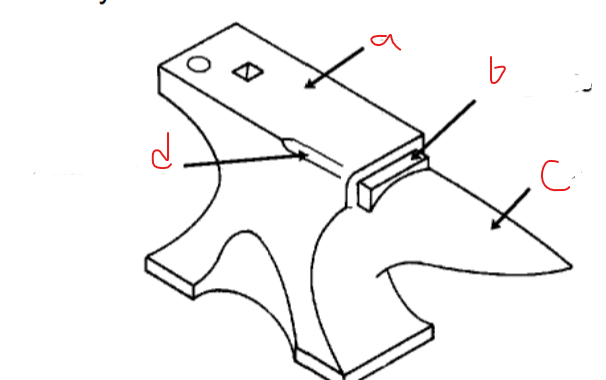
What is A?
Face
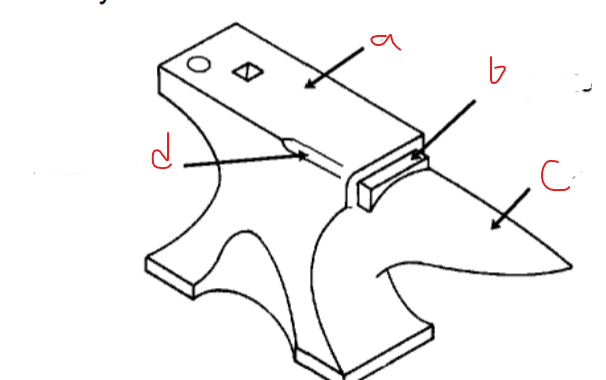

What is B?
Cutting table


What is C?
Beak
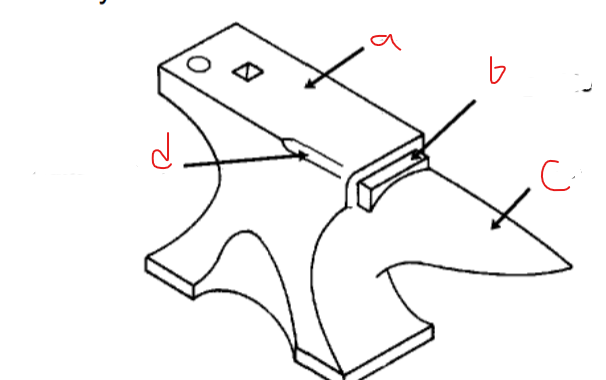
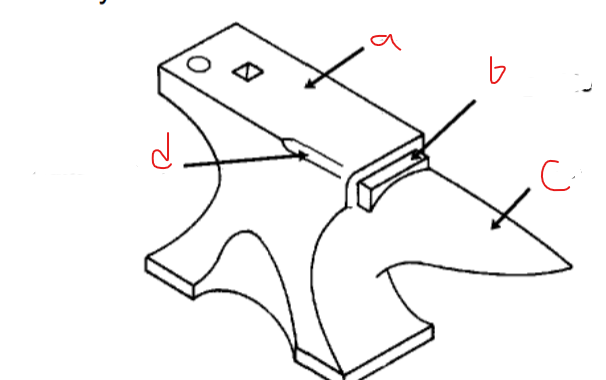
What is D?
Rounded edge
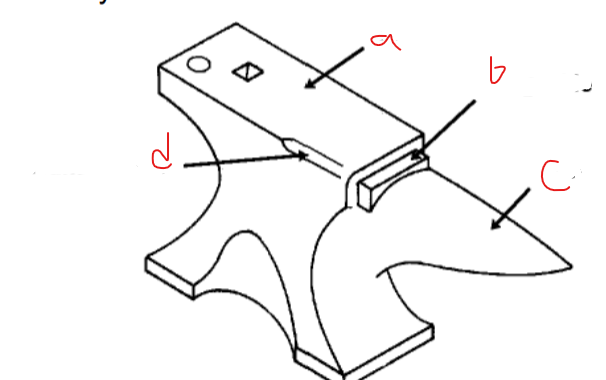

Image_
Open-mouth tongs - for gripping thick flat material
Image_
Pickup tongs - for gripping awkward shapes like round bars
Bending a bar
By using a clamp to hold the meal, and strike the metal on the round edge of the anvil using a hammer.
Drawing down
To make a round bar pointed
Hold the bar at a slight angle to the anvil face and hit on one side, the anvil face flattens the other side
Turn the bar 90° and hit again to make the point square in shape.
Hit each corner of the square shape to turn it into an octagonal shape
Continue turning the bar and hitting the corners until the point is round in shape.
Upsetting
the process of thickening the metal by gripping the metal on the leg vice, and then to hit the top with a metal mallet
Twisting
Heat the bar to a bright red and then grip it in the vice and slide on a special twisting tool, or use a large tap wrench.
Forging a loop
Bend the length of the loop circumference over the rounded edge of the anvil.
Start the curve by hammering it over the anvil beak
Work towards the end of the metal to complete the curving
Close the loop by tapping it with a hammer on top of the anvil face
Scrolling
To make identical scrolls a master scroll is used. The metal is heated to bright red in a forge and then tightly wrapped around the master scroll. To stop the metal from slipping the end is prepared by forging the end into a hook shape

Image_
master scroll - a jig for scrolling